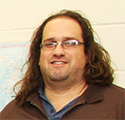Four early-career neuroscientists at Cold Spring Harbor Laboratory (CSHL) have been awarded prestigious NARSAD Young Investigator grants
Cold Spring Harbor, NY — Four early-career neuroscientists at Cold Spring Harbor Laboratory (CSHL) have been awarded prestigious NARSAD Young Investigator grants. The announcement was made by the Great Neck, N.Y.-based Brain and Behavior Research Foundation (BBRF).
The four are all postdoctoral researchers, and are among 200 awardees chosen from among 1199 applicants worldwide. The two-year, $60,000 NARSAD grant award is highly coveted within neuroscience circles, in part as a mark of recognition for doing cutting-edge research as recognized by BBRF’s 138-member scientific council; and as a means of facilitating the transition for young scientists to ultimately work in laboratories they themselves direct.
Bruce Stillman, Ph.D., the President and CEO of CSHL, extended his warm congratulations to the four. “On behalf of the entire faculty, let me say that we are proud of you, individually, and pleased that through your projects, the goal of our basic research program in neuroscience of understanding the biology underlying devastating disorders including schizophrenia and autism has been given an important boost.”
Dr. Jeffrey Borenstein, BBRF president and CEO, explains that the NARSAD Young Investigator Grants“enable early-career scientists to garner pilot data for innovative ideas before they have ‘proof-of-concept’ for their work. After our initial funding, they usually go on to receive sustained grant support from other sources that has proven to equal as much as 50 times the original NARSAD grant amount. Our grants offer the first critical backing of their work.”
Three of the four CSHL grant winners are studying autism and autism spectrum disorder (ASD); one is conducting research on schizophrenia. They are:

Sandra Ahrens, Ph.D., in the lab of Associate Professor Bo Li, will study the role of a brain circuit called the thalamic reticular nucleus circuit and its dysfunction in a genetically engineered mouse model of schizophrenia. The thalamic reticular nucleus is thought to play a critical role in sensory processing and in cognitive functions such as attention. Deficits in attention is a core feature of schizophrenia.

Guy Horev, Ph.D., in the lab of Professor Alea Mills, will assess brain development in mouse embryos with a genetic deletion on the chromosomal 16p11.2 region, a deletion that occurs in patients with autism, so as to pinpoint the genes that lead to autism-like impairment and establish a
cellular assay for impairment and, ultimately, to see if rescuing the developmental impairment will correct the behavioral impairments.

Yongsoo Kim, Ph.D., in the laboratory of Associate Professor Pavel Osten, will explore aspects of a finding that intranasal oxytocin can improve social behavior in autism. The study will determine the physiological mechanisms of intranasal oxytocin in an animal model of autism, describe what brain regions respond, and how it alters brain activity in response to social stimulation that leads to the improvement in social behavior.

Keerthi Krishnan, Ph.D., in the lab of Professor Z. Josh Huang, seeks to unravel the pathogenesis of Rett syndrome, an autism spectrum disorder, caused by mutations in methyl-CpG-binding protein 2 (MeCP2). The study will use advanced genomic methods in a mouse model to trace molecular changes in a brain region-specific, cell type-specific manner during early development, and thus begin to unravel the complex genetic architecture of Rett Syndrome.
Written by: Peter Tarr, Senior Science Writer | publicaffairs@cshl.edu | 516-367-8455
About the Brain and Behavior Research Foundation
Since 1987, the Foundation has invested over $300 million in research to identify causes, improve treatments and develop prevention strategies for a broad range of psychiatric disorders, including depression, schizophrenia, autism, and bipolar, anxiety, post-traumatic stress, attention-deficit hyperactivity and obsessive-compulsive disorders. All overhead costs for the NARSAD Grants programs and operational expenses of the Foundation are underwritten by two family foundations: 100% of all donor contributions for research are invested in NARSAD Grants. For more information visit bbrfoundation.org